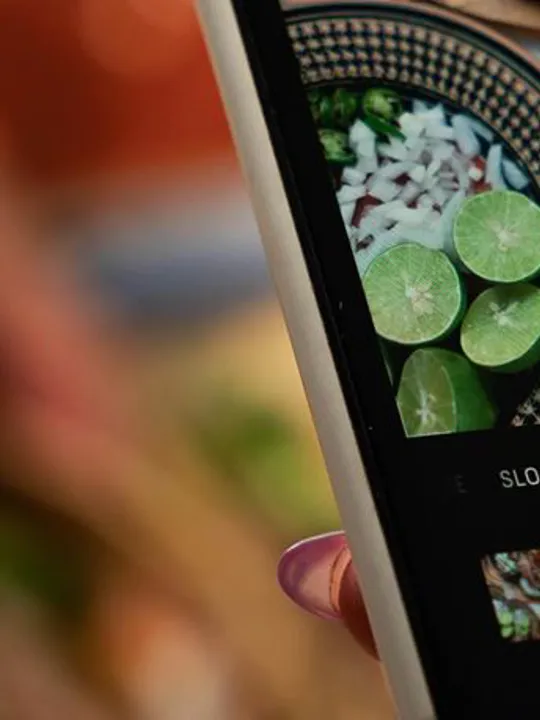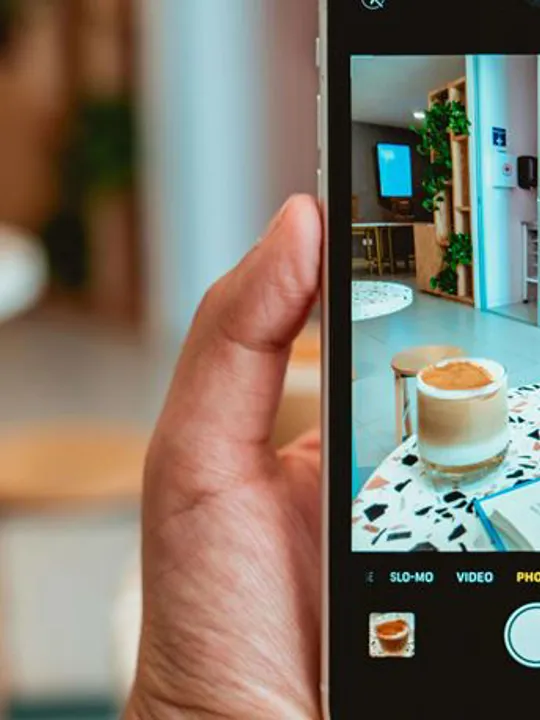What is User Generated Content (UGC)?
User generated content (UGC) is any form of content created and shared by users based on their experiences, opinions, ideas, or feedback. UGC can be:
Photos
Videos
Reviews
Blog posts
Social media comments
UGC showcases the authentic views and opinions of visitors to your business. There are many pros and some cons to using user generated content, which will be discussed below to help inform you of how to best use UGC for your business.
What is UGC?
UGC refers to any user generated content, such as photos, videos, reviews or posts, and is often used by brands to promote their products and services, build brand awareness, and connect with customers on a deeper level. UGC is also great for showcasing positive experiences and an authentic view of what it is like to visit said establishment. A useful example of common UGC is Instagram stories, such as when people visit a restaurant and post pictures of the food and tag the restaurant.

Pros of using UGC
UGC is authentic and relatable: it is created by real people, for real people, and as such, it is often more authentic and relatable than brand-created content. UGC is often less polished and shows users an authentic experience. This means authentic views of hotel rooms, an insight into dazzling amenities, and a real look at what dishes on the menu look like, helping users to make informed purchasing decisions.
UGC is social proof: When potential customers see other people using and enjoying a product or service, it can make them more likely to buy it themselves. This is because UGC is seen as social proof, which is a powerful motivator in consumer behaviour. An example of this is looking at reviews when visiting a restaurant. You might be undecided on what you want to eat and want to look at customer reviews to find photos of the dishes on the menu to help you decide.
UGC is cost-effective: UGC is a great way to get free content for your brand. You don't have to pay for production or advertising, and you can often get a wider reach with UGC than you could with any paid advertising campaign. By creating a targeted hashtag associated with your brand, you can easily compile a host of valuable UGC.
Additionally, some brands create touchpoints for UGC within their premises, including great backgrounds for photo opportunities and areas of lavish or eclectic decor to encourage selfies and photos to be shared within their venue. Such as the iconic chair in Marco Pierre White’s Mailbox restaurant, or the gorgeously decorated, famous bathrooms of Annabel’s Mayfair.
UGC can be used to generate leads and sales: UGC can be used to generate leads by capturing contact information from users who interact with your UGC. It can also be used to drive sales by showcasing your unique venue, amenities, or menu items.
Cons of using UGC
While UGC offers numerous benefits for brands, it can also present certain drawbacks that should be considered before implementing a strategy. Below are some of the cons of UGC:
Lack of control over content: Brands relinquish control over the content being shared about their products or services when using UGC. This means that they cannot guarantee the quality, accuracy, or message consistency of the content. Inappropriate or misleading content could damage brand reputation.
Potential for negative content: As UGC comes from various individuals, there's a risk of encountering negative reviews, complaints, or even malicious content. This is a worst-case scenario but can harm brand perception and discourage potential customers from engaging with the brand.
Resource requirements for moderation and curation: Brands may need to rely on someone for the monitoring and managing of UGC to ensure compliance with brand guidelines, identify and remove potentially inappropriate content, and repost and respond to the most relevant and valuable content. This can be time-consuming and costly, but if done right can be really beneficial for your brand.
Varying content quality: UGC can range from high-quality professional productions to low-resolution amateur content. Inconsistent quality may not align with your brand's desired image or messaging.

How can UGC be used in marketing?
UGC has become an integral part of marketing strategies, offering an authentic way to connect with audiences, build brand authenticity, and drive engagement. However, if you are unfamiliar with UGC, it can be a little confusing to navigate how to implement effective practices to benefit your marketing.
Below is how UGC can be effectively utilised across various marketing channels:
Social Media:
Engage your audience: Encourage your followers to share their experiences with your products or services using branded hashtags or tagging your brand.
Highlight customer reviews: Showcase real customer testimonials and reviews on websites and across social media channels to build credibility and social proof.
Run contests and giveaways: Host contests that incentivise UGC creation, generating excitement amongst engaged followers and expanding your reach.
Curate UGC into social media campaigns: Feature user generated photos, videos, and stories in your social media campaigns to add authenticity and relatability.
Advertising:
Create UGC-driven ad creatives: Develop ad campaigns centred around user generated content, showcasing the real-life impact of your products or services.
Leverage UGC for retargeting: Target ads featuring UGC to individuals who have previously interacted with your brand or product, increasing engagement and conversion rates.
Showcase UGC on landing pages: Integrate UGC into landing pages to provide social proof and enhance brand credibility.
Website:
Display UGC prominently: Feature UGC throughout your website, such as on product pages, testimonials, and blog posts.
Incorporate UGC into product reviews: Integrate UGC into product reviews to provide real-world perspectives and enhance customer trust.
Use UGC in email marketing: Include user generated content in your email campaigns to personalise interactions and drive engagement.
By effectively utilising UGC across marketing channels, brands can reap significant benefits, including:
Enhanced brand authenticity: UGC demonstrates real-world experiences and perspectives, encouraging trust and relatability among consumers.
Increased brand engagement: UGC encourages active participation from customers, leading to increased social media interactions, website traffic, and brand advocacy.
Improved brand perception: Positive UGC can enhance brand reputation, counteract negative perceptions, and strengthen brand image.
Cost-effective marketing: UGC provides a valuable source of content without the relative costs. UGC is free and authentic.
Enhanced customer insights: UGC offers valuable feedback and insights into customer experiences and preferences, including what people order most, what guests are most impressed by and the things they want to share about your brand and their experience with your brand.
How can you get more user generated content?
Create a branded hashtag: Assign a unique hashtag to your brand that customers can use when sharing photos, videos, or reviews of your products or services. This will make it easier for you to track and find UGC. For example, #StarbucksMoments is a commonly used hashtag for Starbucks.
Run contests and giveaways: Host contests and giveaways that encourage customers to create UGC. You can offer relevant prizes as a way to connect with audiences, reward loyal customers and generate more UGC of engaged followers and customers.
Encourage your customers to tag you: Make it easy for customers to tag you in their UGC by asking them to do so in their posts or by including your brand's social media handle in your social media bios. This will help you to find and share UGC that has been created about your brand.
Respond to customer comments and messages: When customers leave comments or messages on your social media pages, take the time to respond to them. This will show that you value their feedback and that you are open to communication, as well as show off your brand’s personality. Additionally, it can encourage them to create more UGC.
Partner with influencers: Partner with influencers in your industry who have a large following of engaged followers. Influencers can help you to reach a wider audience and to generate more UGC.
Encourage your employees to create UGC: Your employees are a great source of UGC. Encourage them to share photos and videos of the atmosphere of your restaurant, and fantastic photos of anything exciting going on in your hotel. A great example of a restaurant that does this is Turtle Bay’s TikTok. Their staff work together to produce exciting and humorous TikTok content that appeal to their audiences and capture their brand.
Create UGC-friendly products: Design products that are easy for customers to take photos of, such as quirky packaging for take-out food, like the Innocent Smoothie knitted hats from a campaign a few years ago. Additionally, having an area of your venue reserved for UGC is a fantastic way to get more people to take and share photos, such as the iconic red wings of cocktail bar Dirty Martini.
How can UGC be used by a hospitality business?
UGC is incredibly beneficial for hospitality businesses. If you’re unfamiliar with the power of UGC and are keen to implement some winning strategies, below we’ve included some tips to help hospitality businesses.
Encourage guests to share their experiences: Encourage your guests to share their photos, videos, and reviews of their stay or dining experience using branded hashtags or by tagging your brand on social media. This can be done through in-room signage, social media prompts, or even offering incentives for UGC creation.
Showcase customer reviews and testimonials: Highlight real customer reviews and testimonials on your website, booking pages, and social media platforms. Positive feedback from guests can significantly influence decision-making for potential customers, establishing credibility and trust.
Run competitions and giveaways: Host competitions and giveaways that incentivise guests to create UGC. Offer prizes such as complimentary stays, dining vouchers, or exclusive experiences to encourage participation and generate excitement amongst engaged audiences.
Feature UGC in social media campaigns: Incorporate user generated photos, videos, and stories into your social media campaigns to add authenticity and relatability. Showcase the real-life experiences of guests to enhance the appeal of your hospitality offerings.
We can help
At Cab Hospitality, we are specialists in all things hospitality marketing. Our expert teams can curate strategies bespoke to your business. Through our implementation, we can assist with enhanced brand credibility and trust, improved customer engagement and improved customer feedback.
Our dedicated team can assist with the development of a comprehensive UGC strategy that aligns with your business goals and target audience. From there we can assist in the creation of UGC, helping you with how to poise guests to post more and hire the relevant influencers to generate desirable imagery that aligns with your brand.
Another element of UGC is the management of organic social media. We can take all the hassle of this off your hands and manage your organic social media and UGC posting entirely, in line with your brand requirements. With everything safe in our hands, we can also track the performance of UGC and your social media channels as a whole to measure its impact on your business, helping us to produce better campaigns in future with these insights.
If you’d like to know more about our services and how we can help with your business’s marketing aims, please get in touch.